What Is SEO?
SEO stands for Search Engine Optimization. It’s the process that increases a website’s ranking on search engine result pages (SERPs).
When done right, SEO for HVAC companies improves your website’s organic search visibility, increasing the quantity and quality of traffic to your website.
What Can SEO Do for HVAC Companies?
Because SEO for HVAC companies helps drive more traffic to your website, you will generate more qualified leads with more jobs and revenue coming from the web. It increases your brand awareness and lead-generation abilities as well.
HVAC SEO campaigns can be broken down into the following categories for the best results.
1. Mobile-Friendly
2. Core Web Vitals (CWV)
3. Build a Website That Converts Visitors to Leads
4. Service Pages
5. Geo-targeted Content
6. Blogs
7. Images and Videos
8. Testimonials
9. Title Tags and Meta Description
10. Schema Markup
11. Internal Links
12. Business Categories
13. Business Description
14. Business Hours
15. Address vs. Service Area Business
16. Products and Services
17. Photos
18. Business Description
19. Questions and Answers
20. Consistent NAP
21. Track Everything and Make Data-Driven Decisions
Looking for an Expert SEO Partner in 2023?
Build a Strong SEO Foundation in Your Website
1. Mobile-Friendly
If your HVAC website isn’t mobile-friendly, you’re missing out on qualified leads and sales to your competitors — guaranteed.
Since 2015, mobile-friendliness has been a dominant ranking factor in Google and Bing’s algorithms. Today, search results are powered by a mobile-first index, meaning Google and Bing generate results for searches like “a/c repair near me” from local HVAC companies’ mobile websites. So, your website will rank lower in organic search results if it’s not mobile-friendly and higher in search results if it is.
Not only that, 55% of global website traffic is driven by mobile searches, meaning consumers not only default to, but prefer, to search for local businesses using the convenience of their phones.

Not sure if your website is mobile-friendly? Try Google’s Mobile-Friendly Test to see if yours could use an upgrade.
2. Core Web Vitals (CWV)
In May 2021, Google launched a core update called the “Page Experience update.” It introduced Core Web Vitals as a ranking factor — scores that still influence the results of HVAC SEO campaigns for heating and cooling companies across the country.
Core Web Vitals is the modern, steroid-boosted equivalent of site speed — a measurement of how quickly your site loads and how easy it is to use.
To pass Core Web Vitals and provide a seamless experience for your website visitors, focus on the following:
3. Build a Website That Converts Visitors to Leads
Your HVAC website needs to have multiple ways to convert visitors into phone calls and leads.
If you aren’t using multiple conversion methods on your site, you’re consistently losing leads. These conversion methods are key, and you can customize them to what you find your customers asking or needing most.
To ensure the maximum leads to your site, you need to include these conversion points to entice your visitors to contact you.
- List your phone number in your website’s header in the upper-right corner.
- Include a contact form on every page of your website.
- Website chat services, like Blue Corona Chat, to connect with visitors in real time and capture more leads.
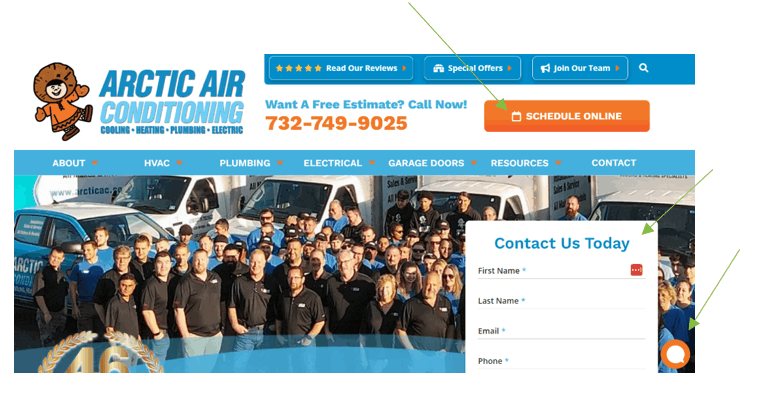
Three clear points of contact are shown immediately upon clicking on this site. There is also the chat button that drives more lead conversions from live conversations.
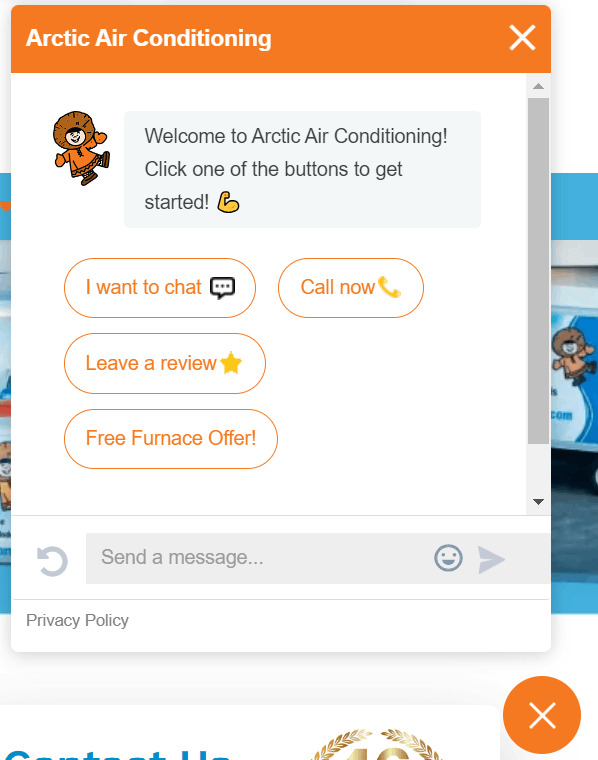
Tip: Defer non-critical scripts, like website chat services, to load after your webpages’ critical elements to reduce page load time and improve their SEO value.
Create Useful Content
4. Service Pages
Google ranks web pages, not websites. So, every page on your website is another opportunity to rank on Google and to generate more website traffic and leads. Google also wants searchers to receive the most relevant results from their searches.
To rank at the top of SERPs and maximize organic traffic to your website, publish service pages for every service you offer.
For example:
- A/C Repairs
- A/C Replacements & Installations
- A/C Tune-Ups
- Furnace Repairs
- Furnace Replacements & Installations
Service pages provide signals to Google and other search engines that your business is an HVAC company. And since Google ranks individual webpages, every service page is a new opportunity to generate more calls and qualified leads from your SEO campaign.
Below is a great example of a site showing their service options to its visitors.
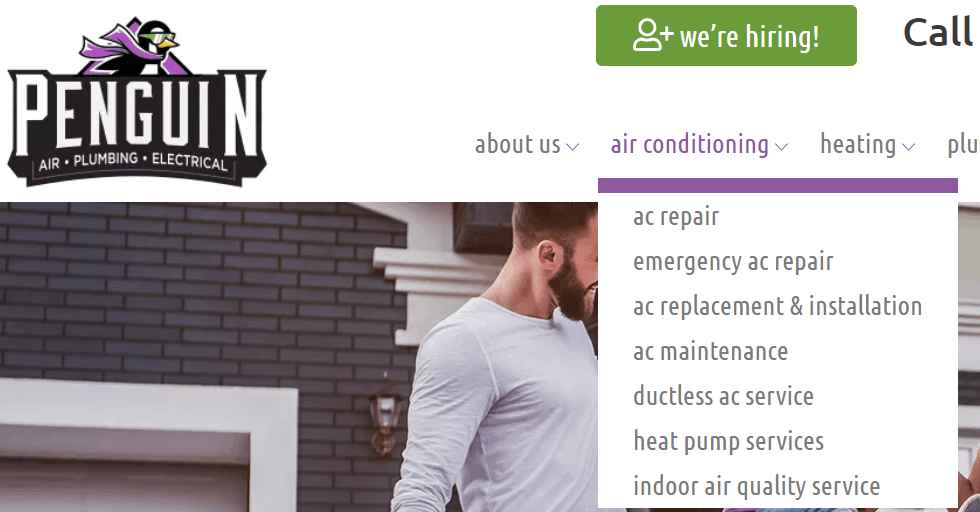
In addition, showing images or videos of your technicians builds trust with homeowners and shows off your heating and cooling expertise.

5. Geo-targeted Content
Google reads user’s location data to cultivate the best results for them on the SERPs. By doing this, you rank higher when customers are searching closer to your business location.
Geo-targeted content expands your search visibility and, when optimized well, will help your company rank higher in the cities and service area you work in but do not have a physical presence in.
6. Blogs
Blogs are a terrific way to show off heating and cooling expertise by sharing your knowledge online with:
- How-to articles and tips
- DIY troubleshooting
- Local sponsorships
- Etc.
HVAC blogs also are an excellent way to generate more backlinks to your site — an important SEO ranking factor to help your company rank for local HVAC-related searches.
Strong internal links are also a notable feature to add to blogs; these are any links on your site that lead to another URL on your site.

Notice the blog portion at the top of their site.
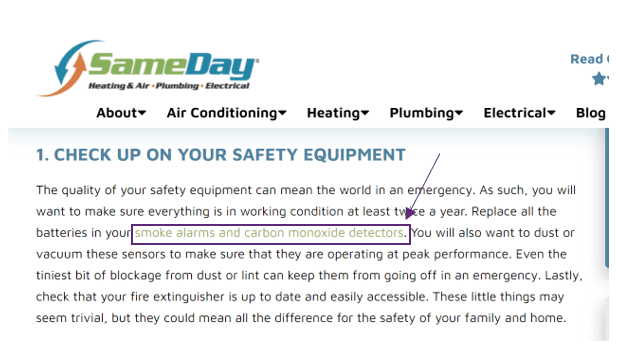
A prime example of a quality internal link providing positive SEO signals to Google, it links back to another blog post of its own!
7. Images and Videos
When it comes to best practices for HVAC SEO with images and videos, you should:
- Compress your images to reduce the file size and improve their on-site load time. Use a WordPress plugin or a free image compression tool.
- Ensure all your site’s images contain alt tags. Alt tags help search engines understand what your image is about and can add greater SEO value to your page through context. Not only that, but alt tags ensure that those who use screen readers can understand what that image depicts, providing enhanced accessibility on your website.
- Make sure your videos are embedded responsively and can load within Google’s time frame of two and a half seconds or less. A video that loads too slowly will look lower quality to Google, so to increase rankings, double-check your site content with these SEO strategies!
Examples of quality site images and videos:
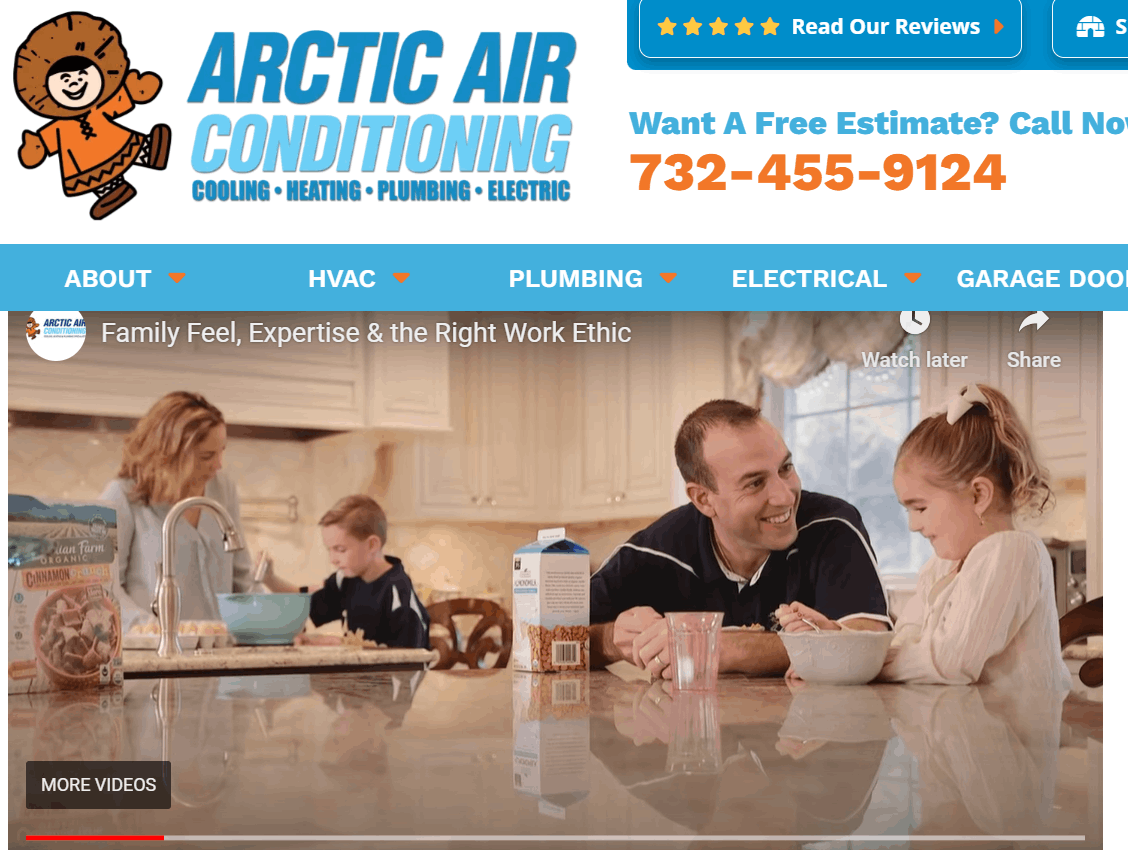
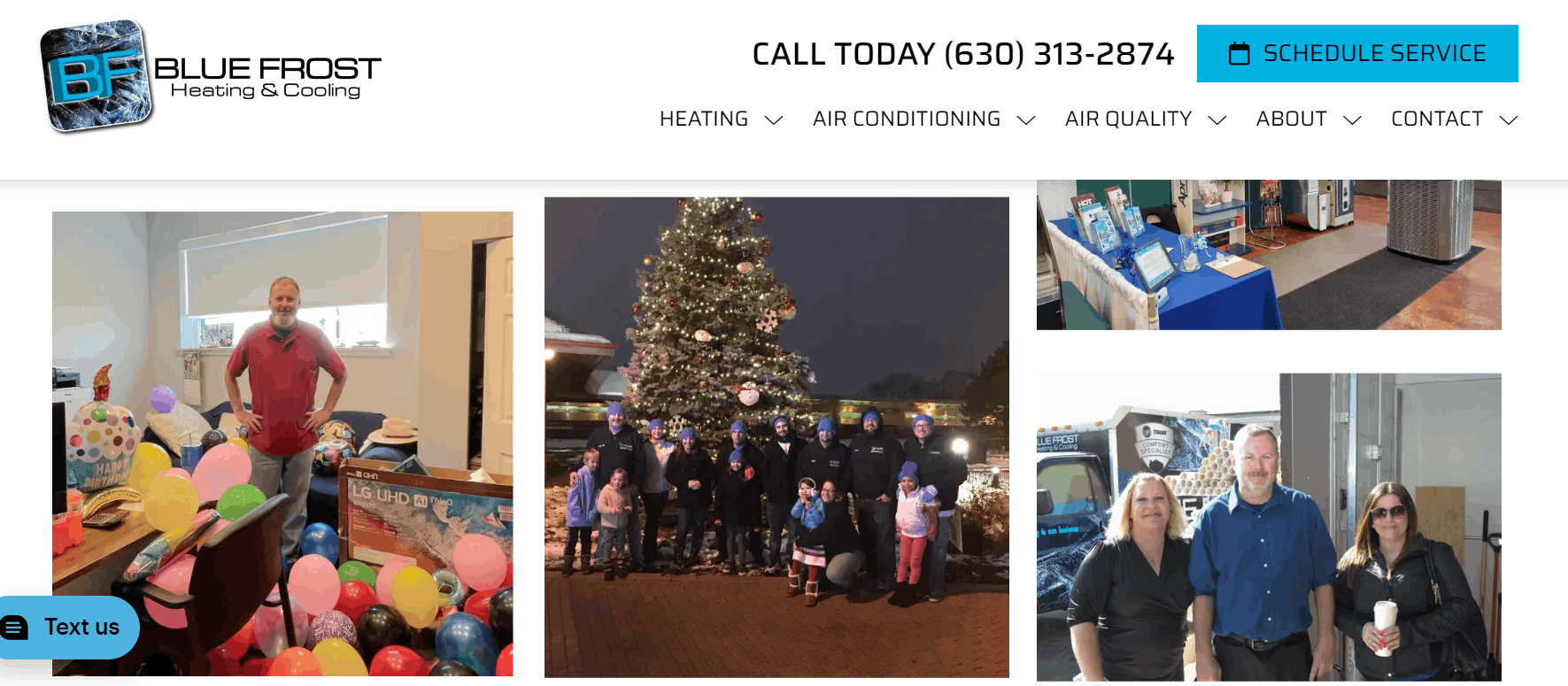
Having images and videos of your team is extremely beneficial since it creates a connection with a potential client. High-quality content of employees working or technicians smiling happily in uniform will show your HVAC company’s brand and culture.
If a customer can see a technician’s image on your site who could be completing their service, they will often gain that element of trust. Trust is huge for HVAC companies getting business since you are most often going to customers’ homes.
Build trust with users and generate more leads and booked jobs from your site’s organic traffic.
8. Testimonials
Any reviews that your HVAC business receives are going to weigh on Google’s algorithm. Don’t overlook the benefits of reviews; quality and quantity do matter!
Imagine looking for a business — they both have 4.8 stars, but one has 20 reviews and the other has 1,000. The one with more is getting picked by searchers.
Generating online reviews on your GBP profile is a huge boost for your business. Google sees the reviews and uses them as a local ranking signal, boosting your visibility! 46% of searchers trust online reviews as much as one from close family or friends.

Get Your Technical SEO Right
9. Title Tags and Meta Description
Title tags are particularly important to SEO and your HVAC site since they are how your webpage will show up on the SERPs and in the page URL. Optimize them for keywords and uniqueness across every page.
Here are a few title tag best practices to keep in mind:
- Keep title tags to between 55 and 60 characters, including spaces (or pixels), as Google will cut off the remaining characters beyond this limit.
- Include your webpage’s target keyword.
- Make your title tags enticing to click to help improve your click-through rate from SERPs.

You want your meta description to be an eye-catching and informative short paragraph that will draw customers’ interest in clicking on your site over any competitors.
Meta description reminders:
- Meta descriptions should be between 120 to 145 characters total but not go past 155.
- Create a unique description to improve visibility and stand out from the competition.
- Ensure that your call-to-action is the key point of your meta description.
- Use your keywords here too!

10. Schema Markup
Schema markup is a universal HTML language all search engines use and understand.
Schema markup helps your business rank for HVAC-related searches in your local markets.
Schema markup eliminates the guessing game Google and other search engines make when crawling, reading, and indexing your site. It provides important local SEO information about your business to search engines, like your business’s:
- Name
- Type of business
- Address
- Website
- Phone number
- Social media profiles
- Logo
- Hours of operation
- Price range
- Etc.
11. Internal Links
Internal links help users navigate from one page of your website to the next.
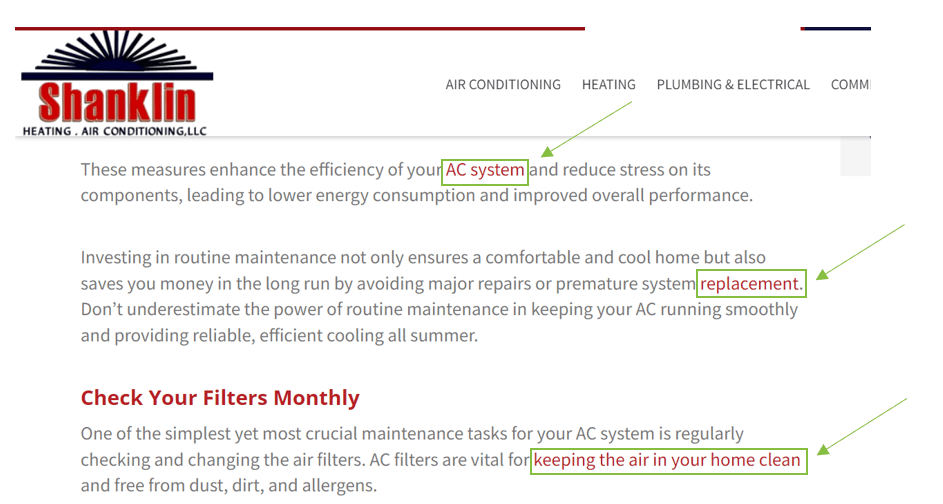
All three of the marked words/phrases show an internal link in one of their blogs. These all either link to another blog on their site or a service page.
Not only do internal links provide a better user experience on your website, but they also send positive SEO signals to search engines, helping them understand what each linked page is about.
Internal links also raise your HVAC company’s page authority, ranking you higher on SERPs.
Tip to remember: User experience is now a ranking factor as part of Google’s Page Experience update.
Take a look at another example:

By using keyword-rich anchor text, the link in the image above helps Google understand that this next page is about “gas plumbing repair.”
Boost Your Local Visibility With Google Business Profile (GBP)
12. Business Categories
Labeling your business category on your GBP is a must-do. It’s necessary for Google to see your HVAC business’s category so it can recommend your page to searchers.
Best practices include:
- Do not overusing the categories that GBP offers as options for your HVAC business.
- For SEO, describe what your HVAC business does using the broadest categories that still make sense.
13. Business Description
Add a business description to tell Google useful and relevant information about your business.
Google connects the right searchers to your HVAC company when they know more about your business from this section.
Add a description of:
- Your HVAC company’s history.
- Services you offer.
- Anything that makes you stand out amongst competitors.
- Etc.
Make sure customers can understand what your HVAC company does and stands for from reading the business description.
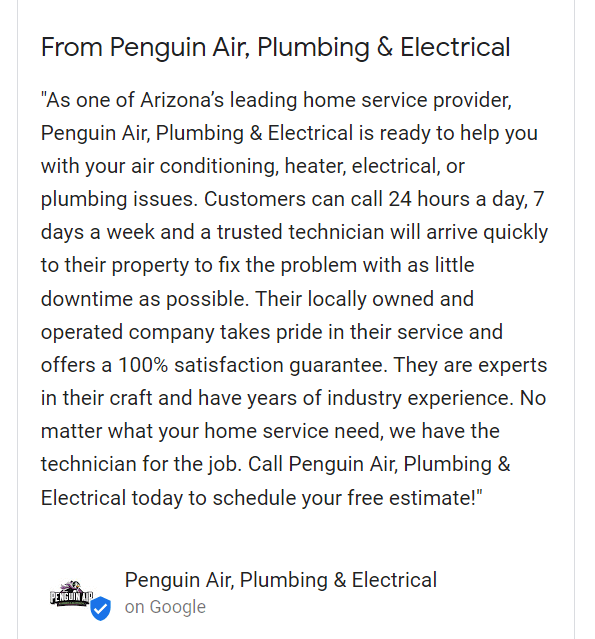
Tip: This description can be up to 750 words, but remember, Google only shows 250 words before the user must choose to “read more,” so make the beginning worth the read!
14. Business Hours
Business hours on your GBP must be correct and consistent across all platforms. Make your business hours as consistent as your NAP for Google to see your authority across all pages.
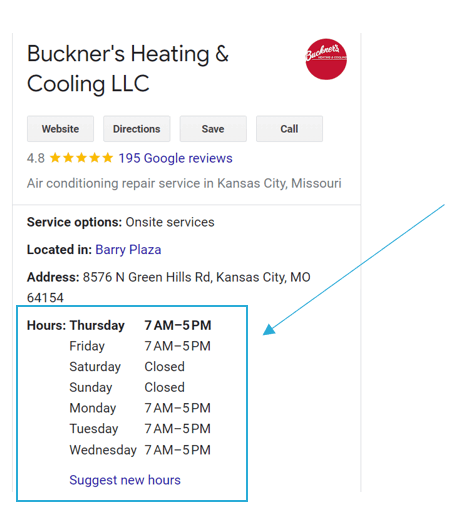
Potential customers want to reach out without hearing the answering machine first, so make sure they know when you are open to avoid frustrations.
Adding your HVAC business’s hours is a simple change on your GBP that would save your customer experience and retention rates.
15. Address vs. Service Area Business
Correct information regarding your business address versus the areas that your HVAC company provides service to helps Google understand where your business is located. HVAC companies have either a business address or a service area listed on their GBP for SEO.
Google ranks your HVAC company higher for searchers that are closer to the areas that you are located in or that you service.
Reminder: The exception to this is if your company has a brick-and-mortar store that you service out of and a service area that you travel to.
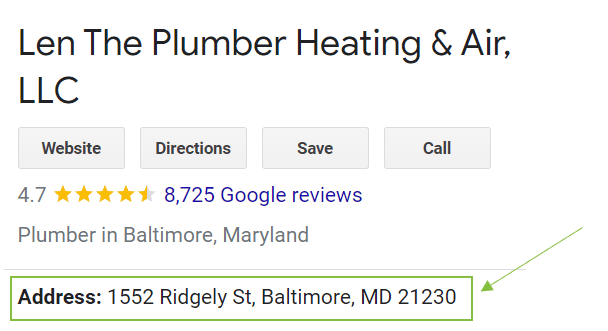
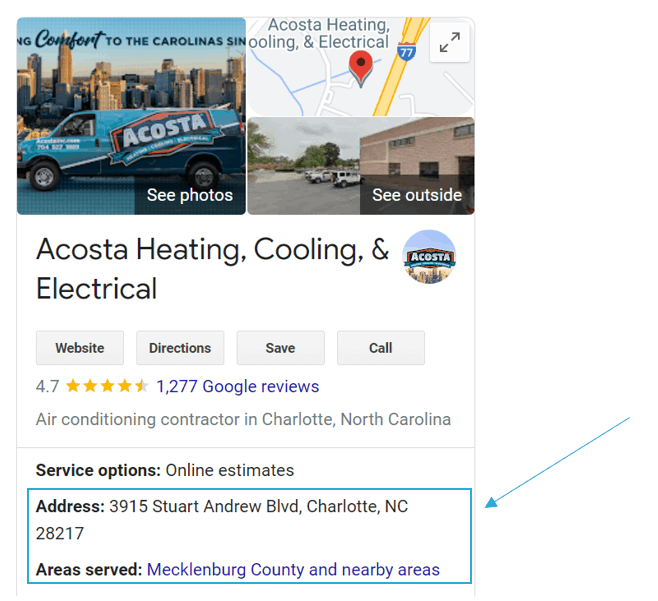
Above is an example of a GBP with just an address and other with a service area and address.
Improve your HVAC SEO practices and increase rankings by having your address or service area clearly outlined for Google.
16. Products and Services
Google needs to see what products and services you offer on GBP to easier show searchers products they are looking for.
By optimizing these HVAC pages, you will rank higher for those products and services on the SERP.
Tip: Add specific products to your page with descriptions and prices — do the same with the services that you offer.
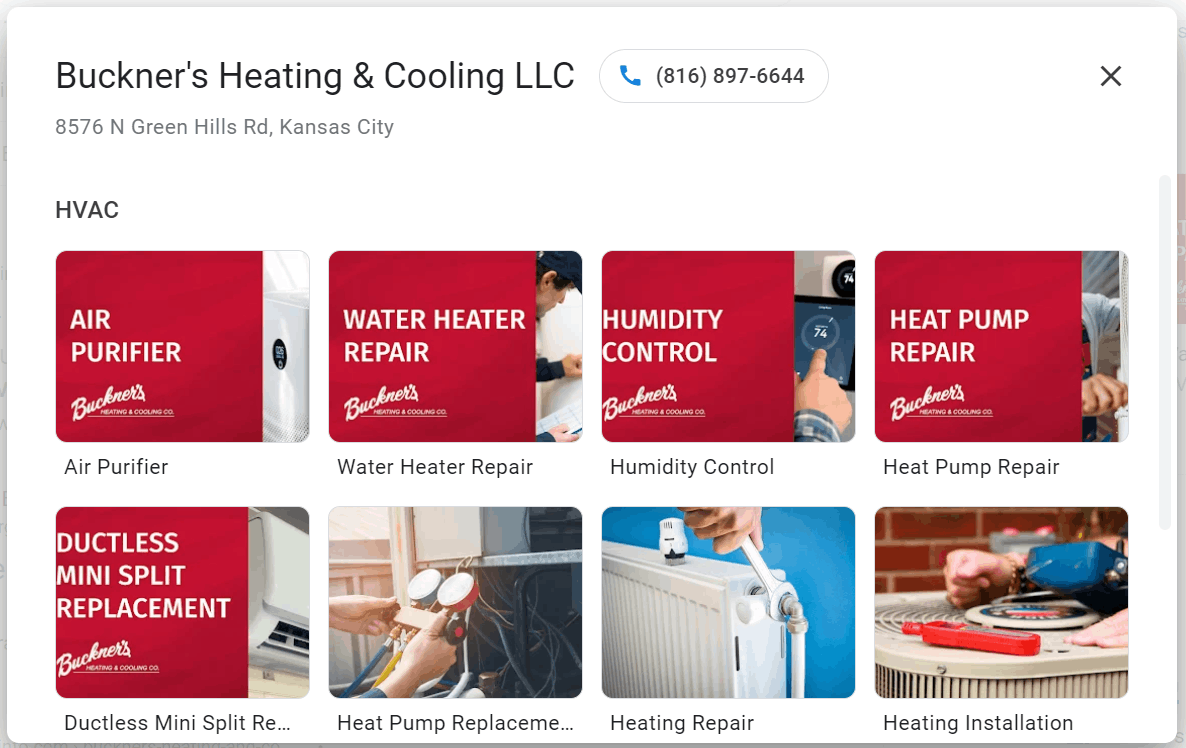
These additions not only help the customers, but more importantly, you appear stronger to Google. Your rankings in organic search will increase when you are already showing the products and services customers are searching for in your GBP!
17. Photos
Optimizing your GBP profile with photos helps Google to see that your business is real and in the location you have listed on your GBP.
Include photos of your building, inside and out, as well as employee images for Google to see on your GBP.
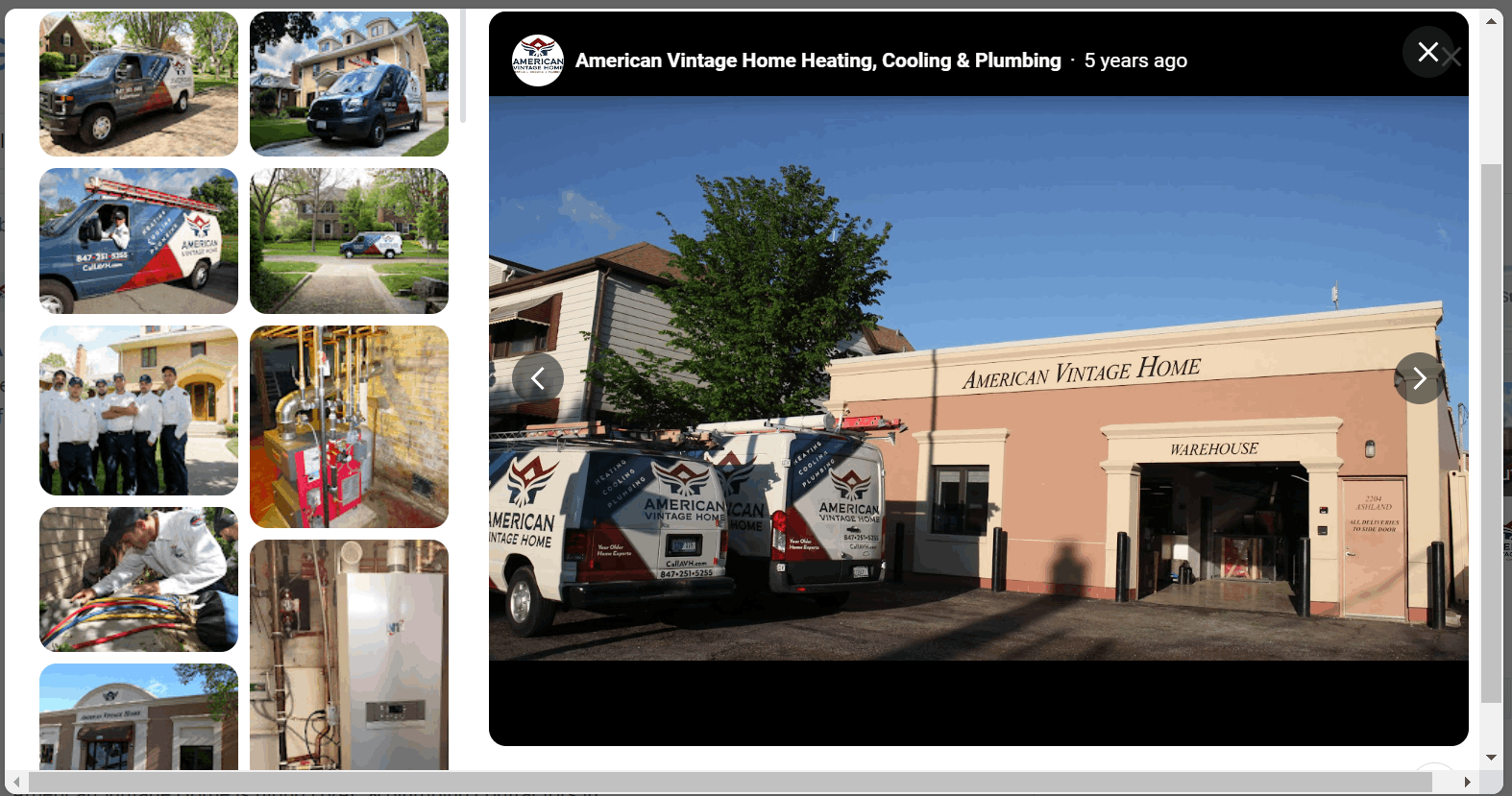
Users want to see useful and high-quality photos that represent your HVAC business all around. Showing images of your whole team or technicians servicing areas is a nice touch for consumers to see the real people that they would be hiring.

18. Business Information
Keep all aspects of your business’s information up to date. The information on your GBP must be consistent across your website and other platforms. Having matching information shows Google that your HVAC business has accurate, up-to-date information.
Customers want to understand your business before they hire you, and the business information section ensures that.
It’s best practice to think about what you would look for if you were trying to find out information about a business that you want to hire.
19. Questions and Answers
Be sure to answer any questions that customers have asked on your GBP; you appear more reputable to Google while also answering questions other customers may have wanted to ask as well.
When you answer customer questions, your brand image is improved and shows that you care enough to respond.
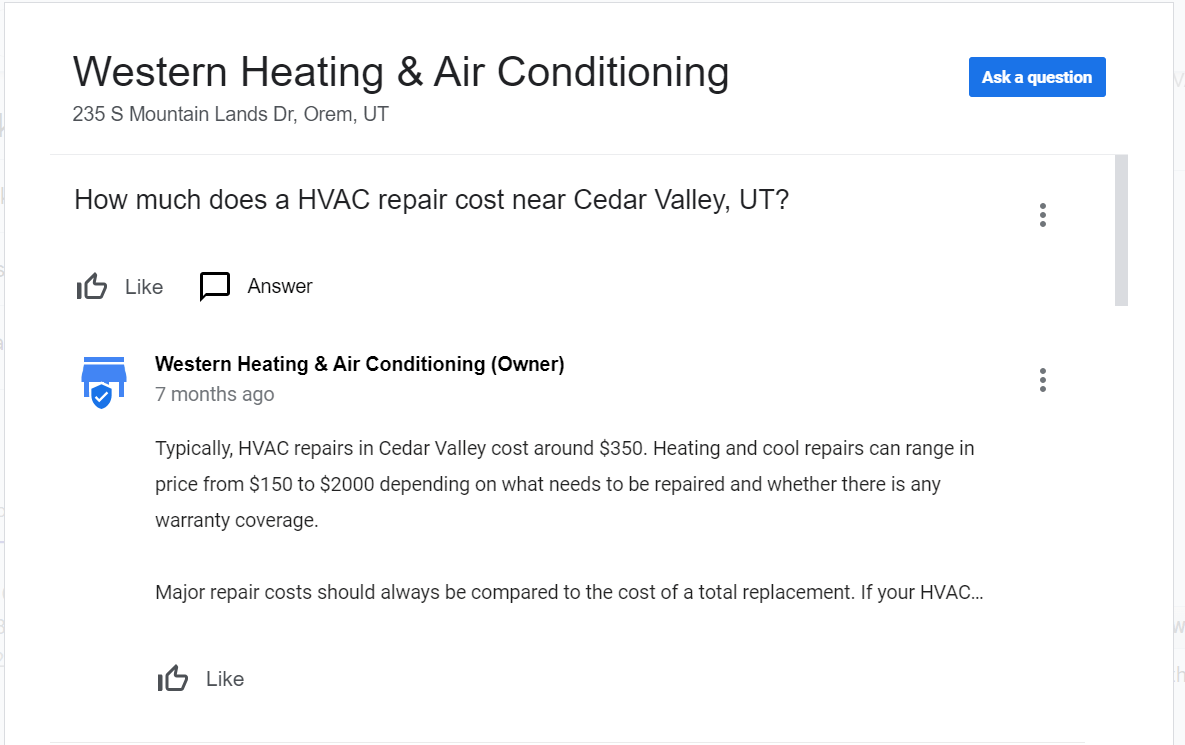
Reminder: It’s best practice to respond to both positive and negative questions or comments here!
20. Consistent NAP
NAP stands for name, address, and phone number. Your website will have more authority and rank better organically from search engine optimization, if you ensure that your NAP has consistency across all your platforms.
Your NAP should match on your:
- Google Business Profile
- HVAC website
- Social platforms
- Information areas and advertising spaces
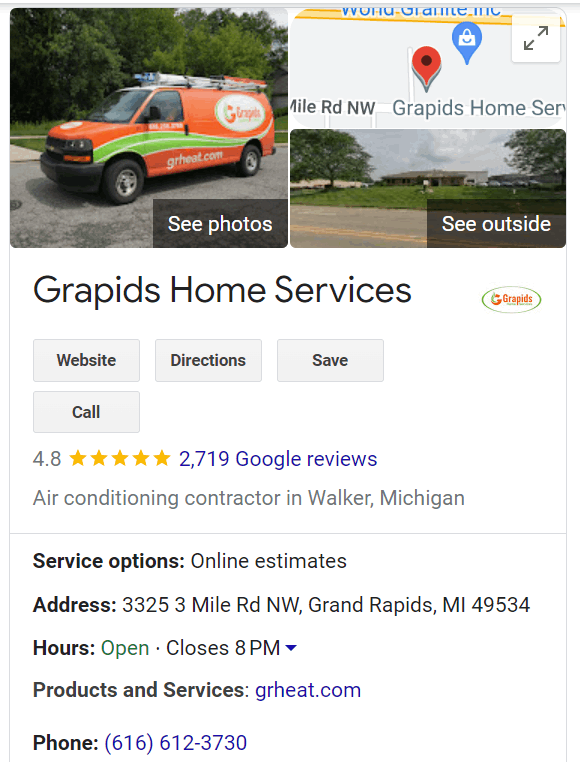

Note: The numbers are consistent, they are just both tracked lines that change!
Google must see NAP consistency across these platforms for your site to gain authority and rank higher.
- If you are interested in learning even more about GBP overall, check out https://www.bluecorona.com/blog/google-business-profile-guidelines/
21. Track Everything and Make Data-Driven Decisions
Tracking data across your business platforms is key for knowing how well your SEO strategy is working.
How will you know what to improve in your SEO practices if you aren’t tracking your HVAC company’s data?
Having the data for the following categories allows you to know your HVAC company’s audience — you see what is or isn’t working for your website optimization.
Here are the ways you should track your HVAC business’s data for best practice with SEO.
- Keyword rankings
- Local website traffic
- Qualified leads from SEO
- Revenue generated by SEO
- ROI from SEO
Looking for an Expert SEO Partner in 2023?
At Blue Corona, we have a team of HVAC SEO experts who can help you with all your optimization and marketing needs. Our data-driven company understands how site data can speak volumes about your SEO demands. Contact us today if you are looking for a partner to help grow your HVAC business and incorporate a strong SEO campaign for you in 2023!

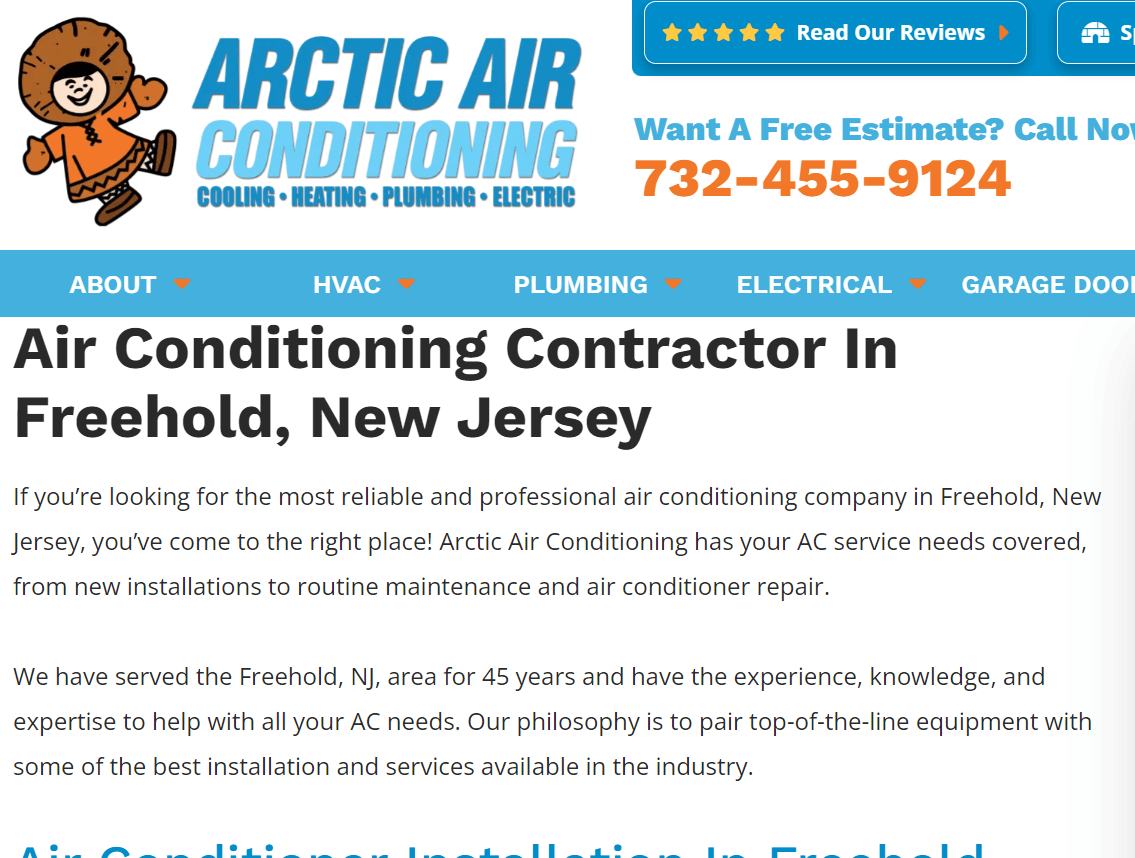
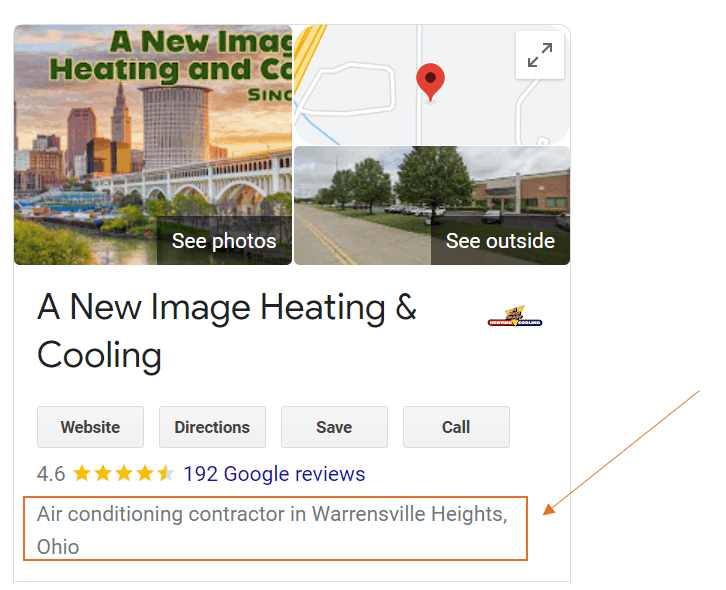

Recent Comments